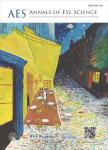Longitudinal analysis of quantitative biomarkers using projection-resolved OCT angiography in retinal vein occlusion
作者机构:Department of OphthalmologyCentre Hospitalier Intercommunal de CréteilUniversitéParis EstCréteilFrance Laboratory of ImagesSignals and Intelligent Systems Laboratory(LISSI/EA 3956)University Paris-EstCréteilFrance Clinical Research CenterGRC Maculaand Biological Ressources CenterCentre Hospitalier Intercommunal de CréteilCréteilFrance UNIACTNeurospinISVFJCEAGif-sur-YvetteFrance
出 版 物:《Annals of Eye Science》 (眼科学年鉴(英文))
年 卷 期:2021年第6卷第2期
页 面:19-31页
学科分类:1002[医学-临床医学] 08[工学] 0812[工学-计算机科学与技术(可授工学、理学学位)]
主 题:Retinal vein occlusion(RVO) vascular density(VD) optical coherence tomography angiography(OCTA) fractal dimension(FD) image analysis
摘 要:Background:To evaluate a fully automated vascular density(VD),skeletal density(SD)and fractal dimension(FD)method for the longitudinal analysis of retinal vein occlusion(RVO)eyes using projection-resolved optical coherence tomography angiography(OCTA)images and to evaluate the association between these quantitative variables and the visual prognosis in RVO ***:Retrospective longitudinal observational case *** presenting with RVO to Creteil University Eye Clinic between October 2014 and December 2018 and healthy controls were retrospectively *** 1 consisted of central RVO(CRVO)eyes,group 2 consisted of eyes with branch RVO(BRVO)and group 3 of healthy control *** acquisitions(AngioVue RTVue XR Avanti,Optovue,Inc.,Freemont,CA)were performed at baseline and last follow up ***,SD,and FD analysis were computed on OCTA superficial and deep vascular complex(SVC,DVC)images at baseline and final follow up using an automated *** regression was performed to find if and which variable(VD,SD,FD)was predictive for the visual ***:Forty-one eyes,of which 21 consecutive eyes of 20 RVO patients(13 CRVO in group 1,8 BRVO in group 2),and 20 eyes of 20 healthy controls were *** the level of SVC,VD and FD were significantly lower in RVO eyes compared to controls(P0.0001 and P=0.0008 respectively).Best-corrected visual acuity(BCVA)at last follow-up visit was associated with baseline VD(P=0.013),FD(P=0.016),and SD(P=0.01)at the level of the SVC,as well as with baseline FD at the DVC level(P=0.046).Conclusions:Baseline VD,SD,and FD are associated with the visual outcome in RVO *** parameters seem valuable biomarkers and may help improve the evaluation and management of RVO patients.



